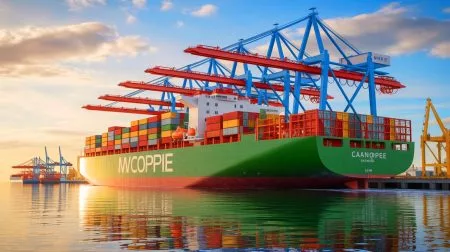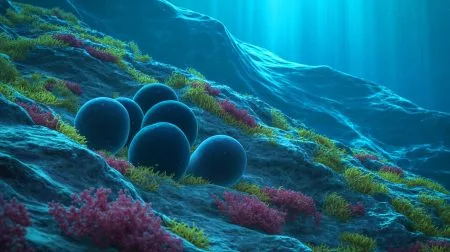| IN A NUTSHELL |
|
The vastness of the world’s oceans has long been a symbol of mystery and intrigue, but recent discoveries have unveiled a new, invisible menace lurking beneath the waves. Trillions of tiny plastic particles are saturating the North Atlantic, posing potential risks to marine life and humans alike. A groundbreaking study by the Royal Netherlands Institute for Sea Research and Utrecht University has provided the first quantitative estimate of these nanoplastics, setting the stage for a deeper understanding of their environmental impact.
The Scale of Nanoplastic Pollution
Recent findings from the collaboration between the Royal Netherlands Institute for Sea Research and Utrecht University have revealed an astonishing 30 billion tons of nanoplastics in the North Atlantic Ocean alone. These particles, each smaller than one micrometer, are a testament to the pervasive nature of plastic pollution. The study, published in Nature, underscores the massive scale of this issue, as these nanoplastics outnumber larger microplastics and macroplastics combined.
Helge Niemann, a leading researcher in the study, emphasizes the enormity of this discovery. With a recent grant of approximately 3.5 million US dollars, Niemann is poised to delve deeper into the long-term effects of these particles on marine ecosystems. His team’s research is a crucial step toward solving the mystery of the “missing plastic,” providing evidence that a substantial amount of the world’s plastic waste now exists in the form of microscopic particles.
Understanding How Nanoplastics Enter the Ocean
Nanoplastics find their way into the ocean through a variety of channels. The breakdown of larger plastic fragments under sunlight, as well as transportation via river systems, contributes to their presence in marine environments. Recent evidence also suggests that these particles are carried through the atmosphere, eventually settling on the ocean’s surface or falling with rain.
Niemann’s research highlights the potential biological effects of these particles. Nanoplastics have been discovered in brain tissue, raising concerns about their impact on human health. As these particles permeate the marine ecosystem, from microorganisms to top predators, the full extent of their environmental repercussions remains uncertain. The urgent need for further investigation is clear, as the pervasive nature of these particles poses a threat to the delicate balance of marine life.
Challenges of Identifying and Tracking Nanoplastics
The journey to understanding nanoplastics is fraught with challenges, particularly when it comes to identifying specific types of plastics. Despite their efforts, researchers have yet to find polyethylene or polypropylene among the nanoplastics, suggesting that other molecules may have masked these materials in the study. This highlights the complexity of tracking and categorizing these microscopic particles.
Moreover, the global scope of nanoplastic pollution remains a pressing concern. While the current study focuses on the North Atlantic, the question of whether similar concentrations exist in other oceans looms large. Niemann and his colleagues are determined to expand their research, seeking to uncover the extent of nanoplastic pollution on a worldwide scale. The knowledge gained from these investigations will be instrumental in shaping future environmental policies and conservation efforts.
The Urgency of Preventing Further Pollution
The discovery of nanoplastics in our oceans is a stark reminder of the urgent need to prevent further plastic pollution. While the particles currently present in ocean water cannot be removed, steps can be taken to minimize future contamination. Preventative measures are essential to safeguard our environment and protect the health of both marine life and humans.
As research continues, the hope is that increased awareness and understanding of nanoplastics will drive meaningful action. From reducing plastic production to improving waste management practices, concerted efforts are required to mitigate the impact of these invisible pollutants. The findings of this study serve as a call to action, challenging us to rethink our relationship with plastic and strive for a more sustainable future.
In light of these revelations, the question remains: How can society effectively address the pervasive issue of nanoplastic pollution and prevent further harm to our oceans and ourselves?
Did you like it? 4.6/5 (28)







Wow, 27 million tons of nanoplastics! Is this the new “missing plastic” mystery everyone’s been talking about? 🤔
Thank you for shedding light on this issue. It’s terrifying to think about the scale of pollution we’ve caused.
Are there any specific industries more responsible for these nanoplastics than others?
So, are we basically swimming in a plastic soup now? 🥣
This is insane! What’s next, plastic in our drinking water too? Oh wait… 😢
Great article, but I’m wondering how reliable the methods for detecting nanoplastics are?
How can we, as individuals, help reduce nanoplastic pollution? 🌍
It’s time for industry giants to step up and take responsibility. Enough is enough!
Is there any hope for cleaning up the existing nanoplastics in the ocean?
How do nanoplastics affect marine life? Are they causing any observable harm?